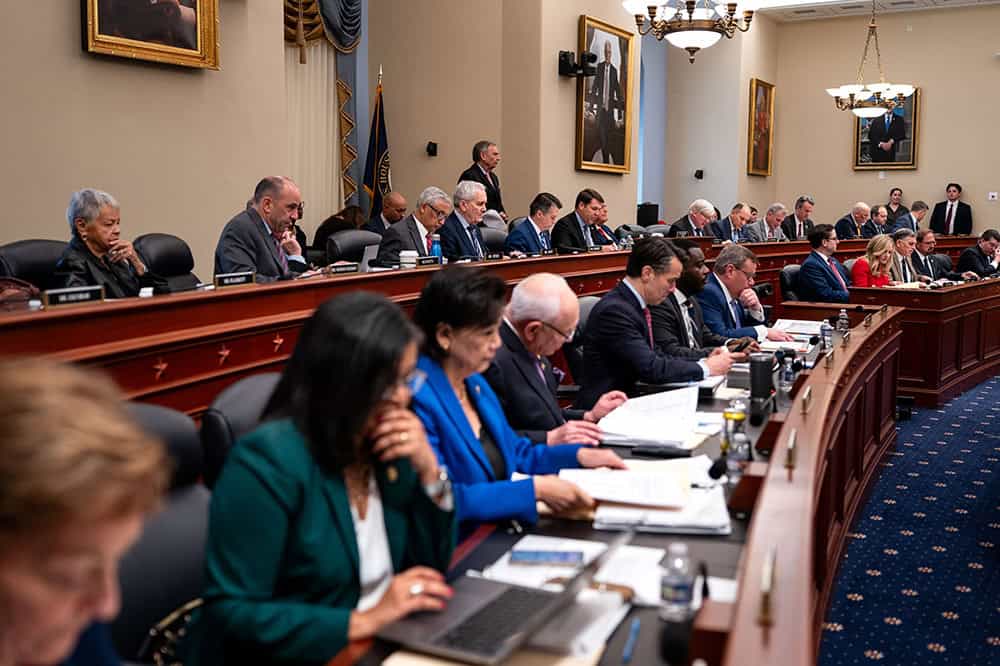What Is a Carbon Tax? How Would It Affect the Economy?
Last Updated September 30, 2021
Global temperatures are now higher than at any other time in history, and such warming is already producing stronger heat waves, heavier rainstorms, and more violent hurricanes. In the coming decades, those symptoms will worsen, causing increasing damage and danger for people, property, and the global economy.
In light of the growing urgency of the climate crisis, many lawmakers, advocacy groups, and American citizens are calling for the government to undertake policies to more comprehensively address climate change.
One prominent proposal that has been discussed is a tax on carbon emissions, which would be aimed at incentivizing the reduction of greenhouse gases. Such a tax could raise revenues that could be used to help ensure communities and businesses become more resilient to avoid the worst effects of warmer temperatures and extreme weather as well as to improve the country’s long-term fiscal outlook.
What Is a Carbon Tax?
Carbon Dioxide (CO₂) is the primary greenhouse gas emitted through human activities, accounting for about 80 percent of such emissions in 2019. The main sectors responsible for those emissions relate to transportation and the generation of electricity. The severity of future climate impacts will depend largely on actions taken to reduce greenhouse gas emissions, making policies to curb greenhouse gases central to addressing climate change.
A carbon tax is a policy that would set a fixed price per ton of carbon or carbon dioxide emitted, with a goal of incentivizing lower carbon emissions. Because CO₂ emissions from the combustion of fossil fuels (coal, natural gas, and oil) are proportional to the carbon content of the fuel, a carbon tax is, in effect, a tax on CO₂.
How Should a Carbon Tax be Structured?
When creating a carbon tax, key considerations and variables for policymakers include the rate of the tax, which sectors of the economy would be affected by the policy, who in a given industry would be required to pay the tax, and what to do with the revenues generated.
What Should the Carbon Tax Rate Be?
The rate of the tax is a central policy choice, and can be informed by several approaches. One approach, called the social cost of carbon, would have policymakers base the tax rate on the net benefits associated with reduced emissions. A different approach would determine an emissions target and then set a carbon tax rate that is estimated to achieve that desired outcome. Alternatively, a tax rate could be set to achieve a pre-determined revenue target over a 10-year period.
Which Industries Would Be Affected?
Policymakers must also consider how broad the tax would be. A tax may be limited to sectors of the economy that produce the most greenhouse gas emissions, or policymakers could decide on a more broad-based approach. Internationally, there are examples of both methods; France’s carbon tax affects sectors that account for 35 percent of the country’s total CO₂ emissions, while Japan’s tax applies to sectors that account for 75 percent of such emissions.
Who Would Pay the Carbon Tax?
Who pays the tax within an industry also needs to be determined. One approach is to tax those who produce fossil fuels; in the case of petroleum, for example, the product would be taxed when it is extracted. Another option is to tax “mid-stream”, such as at petroleum refineries. Finally, policymakers might choose to tax “downstream”, or taxing those who consume the fuel and emit greenhouse gases. For instance, petroleum could be taxed at gas stations or coal could be taxed when used in a generator. Each approach covers different shares of gases emitted and would impose different administrative burdens.
How Much Would a Carbon Tax Raise?
A carbon tax would raise significant revenues. A $25 per metric ton tax on most CO₂ emissions, coupled with an increase at a constant real (inflation adjusted) rate of 5 percent per year could raise $1 trillion in 10 years, according to the Congressional Budget Office. However, its effect on the federal budget would be determined by how the revenues it generates are used.
The use of revenues for policies other than deficit reduction may be a consideration for policymakers who must consider tradeoffs including political popularity, the cost of the overall policy, and whether the effect of the tax on certain groups (such as low-income households) should be mitigated. Some uses of revenues from carbon taxation include rebates in the form of checks or tax credits, additional spending on climate change resilience projects or programs that reduce emissions through other methods, and deficit reduction.
Finally, policymakers may consider a number of other issues, including how a carbon price would interact with policies in other nations. A mechanism known as border carbon adjustments would address such concerns and is under consideration both in the European Union and in the United States.
The Economic Impact of a Carbon Tax
Though the economic effects of a price on carbon would depend on choices made by policymakers, a carbon tax would have wide-ranging impacts. Sectoral impacts would depend on their carbon intensity and the degree to which industries would be able to substitute lower-carbon fuels for higher-carbon ones, among other factors. Impacts on different income groups would stem from their consumption patterns and sources of income.
Generally, a carbon tax would increase the cost of burning fossil fuels, thus increasing the cost of producing goods and services that rely on those inputs, particularly for carbon-intensive things like electricity and transportation. Regions where electricity is derived from coal would see the sharpest increase, since that power source is particularly CO₂ intensive. That change in prices would alter consumption patterns as individuals and businesses shift to consuming goods and services that are less carbon intensive. The effect of a carbon tax on the economy would depend on the revenue uses of the policy; without accounting for how the revenues from a carbon tax would be used, such a tax would have a negative effect on the economy. However, evidence from European countries that have implemented carbon taxes indicate a zero or modest positive impact on GDP and total employment growth.
More specifically, impacts would be felt differently across industries and particularly in the power, transportation, and industrial sectors, which are the three largest greenhouse gas emitters. The power sector is widely expected to be most responsive to a carbon price, as it is both cheaper and more straightforward to reduce emissions there than in some other sectors. Research indicates that even a modest carbon price would lead to a substantial reduction in CO₂ emissions in the sector.
The transportation sector is not expected to be highly responsive to a carbon price. Evidence suggests that consumers don’t significantly change the amount they drive in response to changing fuel prices, and unlike the power sector, the transportation sector does not offer relatively easy opportunities for fuel switching. Finally, the industrial sector is expected to be responsive to a carbon tax in the medium term, but given the variability in fuel use and ability to substitute higher-carbon fuels for lower-carbon ones, certain industries would be more affected than others.
A carbon tax’s effect on households would vary based on their income and spending. Carbon taxes are generally considered regressive because low-income households spend a larger share of their incomes on carbon-intensive goods such as electricity, so a tax on carbon would affect their spending more than it would for high-income households.
Some research suggests that for low-income households, the income effects of a carbon tax may be partially offset by government programs that are linked to inflation (for example, the Supplemental Nutrition Assistance Program or Social Security). If the cost of living were to increase because of a carbon tax, that inflation would trigger an increase in transfer payments to recipient households.
High-income households, on the other hand, may see reduced incomes, since carbon prices have been found to reduce incomes for those who own businesses or greater amounts of capital. Ultimately, the effect of a carbon tax on households across the income distribution would largely be determined by how the revenues generated were used. Rebating some of the revenues to households could make the policy more progressive, for example.
Conclusion
In light of the ever-deepening urgency of the climate crisis, a carbon tax is a policy tool that could not only help our nation address this critical challenge for our future, but also help improve our long-term fiscal outlook. The rate of the tax, who pays it, how lower-income households might be affected, and what to do with the revenue generated by it are all important policy considerations.
Photo by Getty Images
Further Reading
Here’s How No Tax on Overtime Would Affect Federal Revenues and Tax Fairness
Excluding overtime pay from federal taxes would meaningfully worsen the fiscal outlook, while most of the tax benefits would go to the top 20% of taxpayers.
No Taxes on Tips Would Drive Deficits Higher
Eliminating taxes on tips would increase deficits by at least $100 billion over 10 years. It could also could turn out to be a bad deal for many workers.
Full Array of Republican Tax Cuts Could Add $9 Trillion to the National Debt
Fully extending the TCJA would cost approximately $5.0 trillion, while other elements of the Republican tax agenda also have large price tags over ten years.


